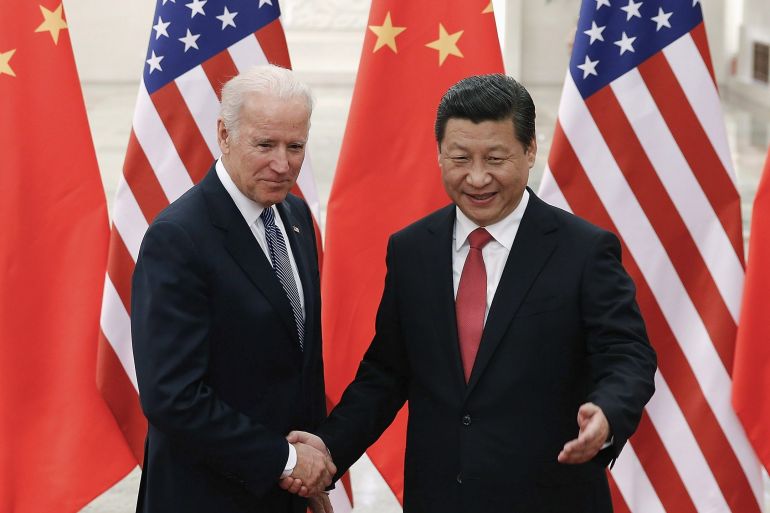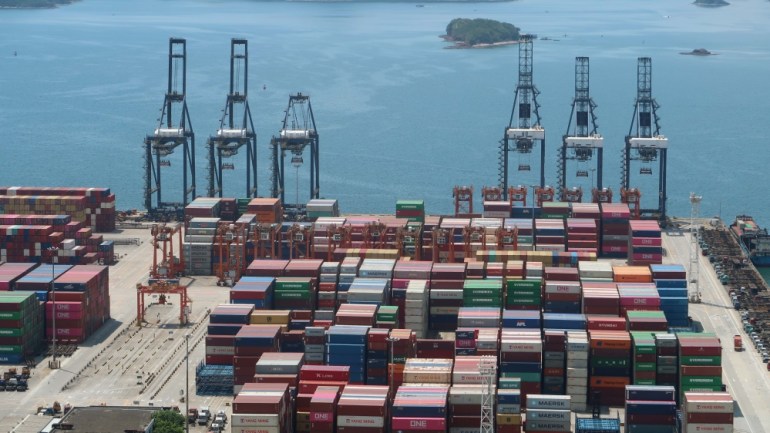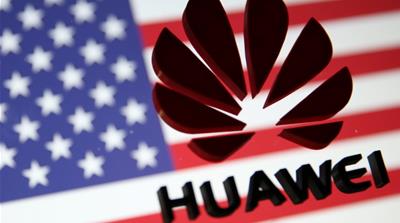For Biden, tough China trade and tech questions may have to wait
COVID-19 and other domestic pressures are likely to dominate most of the US president-elect’s first 100 days, but the trade war with China will linger.

Shenzhen, China – As Joe Biden prepares to become the 46th president of the United States in January, China is unlikely to be top of mind.
A once-in-a-century pandemic that is raging through the US and persuading a possibly divided Congress to pass an economic stimulus bill is probably going to be the issue that keeps him up at night during his first months on the job.
Keep reading
list of 4 itemsFive questions about China’s latest five-year plan
China’s ByteDance challenges Trump’s TikTok divestiture order
China urges US to stop boosting ties with Taiwan
But after losing this month’s election – though not accepting defeat as yet – incumbent President Donald Trump is leaving Biden a deeply scarred foreign policy legacy, especially when it comes to the world’s second-biggest economy, China.
In the waning months of Trump’s presidency, his administration’s rhetoric against China has become more vitriolic than ever. In a speech on Tuesday, US Secretary of State Mike Pompeo described China as “the world’s number-one threat to freedom today” and a “Marxist-Leninist monster”.
Once Biden does get around to tackling the China issue, he will have to approach it on several fronts: Trade, technology, human rights and regional security. The fact that they overlap with one another will hugely complicate his task.
Analysts say Biden is unlikely to move too far away from the main strategic goals set by Trump: Ensuring China is not able to undermine the US’s key economic, geopolitical and military strengths.
But Biden’s tactics will be fundamentally different from those of his predecessor.
“There won’t be a major directional change by the Biden administration [with regards to China], but there will be many technical adjustments in its approach,” Vincent Zhu, an analyst at Rhodium Group focusing on China’s macroeconomic development told Al Jazeera.
![US-China battlefronts graphic, updated October 19, 2020 [Alia Chughtai/Al Jazeera]](/wp-content/uploads/2020/10/INTERACTIVE-US-CHINA-BATTLE-FRONT_2-01.jpg?w=770&resize=770%2C943)
And Biden’s approach to China will also likely be different in character to that of Trump’s predecessor, Barack Obama, who Biden served as vice president.
“[Biden] will have many of the same advisors that worked with Obama, but they have a different look [regarding] China,” Shen Dingli, a professor at the Center for American Studies at Fudan University in Shanghai told Al Jazeera. “They don’t want to repeat Obama’s approach either. They want to be tough.”
Trade
When it comes to rebalancing the US’s $345bn trade deficit with China as at the end of last year, Biden is expected to try to work with the US’s traditional allies, rather than antagonising them as Trump has done. The incumbent president has imposed trade tariffs against the European Union, India, Japan and other countries traditionally considered US allies, in addition to China.
Trump initiated the trade war against China starting in 2018. Despite a “phase-one” trade deal signed in January, US tariffs on about $370bn worth of Chinese goods – and retaliatory levies by China – remain in place.
And China’s pledge to boost purchases of US services and goods – including agricultural and manufactured products and energy – by about $200bn above 2017 levels under the agreement is behind schedule.
“Whether Biden would remove existing tariffs, that’s a big unknown,” said Zhu. “I don’t think we have any evidence to tell at this point,

though what we sort of know is that Biden has very little interest in increasing or escalating the trade war.”
Allies such as the EU have their own grouses against China’s trade practices and treatment of their firms’ intellectual property. Biden has said he would capitalise on those disagreements to build a coalition against China.
“China is playing the long-game – extending its global reach and investing in the technologies of the future – while Trump is designating our closest allies – from Canada to the EU – as National Security Threats in order to impose damaging and pointless tariffs,” Biden said in a speech last year.
“By cutting us off from the economic clout of our partners, he knee-caps our capacity to take on the real economic threat,” he added.
Technology
The other arena within the emerging US-China economic cold war is technology.

The Trump administration placed China’s Huawei, the world’s biggest maker of equipment for the latest-generation 5G mobile phone networks, on its so-called Entity List last year, accusing it of helping Beijing spy on US concerns. Huawei has repeatedly denied doing so. The move restricts US firms from doing business with Huawei.
Trump is also trying to force ByteDance, the Chinese owner of the wildly popular video-sharing app TikTok, to sell the US operations of the platform to American firms. The Trump administration accuses it of harvesting the data of US users for Beijing, something TikTok has also strenuously denied.
Moves such as these are pushing Beijing towards becoming more self-sufficient for its technological aspirations. It wants to become a global leader in advanced technologies such as artificial intelligence, machine learning and robotics, for which it has relied heavily on US chipmakers and other fundamental technologies.
But China’s forthcoming five-year plan for the 2021-2025 period will stress what the government describes as a “dual circulation” development model, which emphasises domestic production, consumption and distribution of goods and services. Its latest version of the “Made in China 2025” development plan that drew a backlash from the US and the EU, now known as the Strategic Emerging Industries Plan, calls for the nurturing of domestic high-tech firms.
China sees this not only as an economic priority but also a national security imperative, analysts say.
“That’s going to be a head-on conflict or source of fierce competition with the US,” Zhu of the Rhodium Group said.
How Biden responds to China’s push to become a technological superpower will be a defining part of his presidency.
Whether he is able to persuade a possibly hostile US Congress to provide the funds to go toe-to-toe with China in a tech space race is something analysts and investors will be watching closely.

“Boosting competitiveness can begin by simply embracing and openly supporting America’s current strengths: foundational R&D, semiconductor equipment and intellectual property, open-source technology, space technology,” said Kevin Xu, founder of the bilingual tech newsletter Interconnected, and who served in the White House and Department of Commerce under the Obama administration.
“When it comes to technology policy vis-a-vis China, boosting domestic competitiveness is a race to the top, not race to the bottom.”
Regional security and human rights
Questions over China’s territorial claims in the South China Sea, the erosion of democratic freedoms in Hong Kong, tensions over the future of democratic Taiwan and a whole host of other issues ranging from diplomatic wrangling over consulates and journalists, to repression and the mass detention of ethnic Uighurs in China’s Xinjiang region raise other challenges for the new US president.
But as with the US’s commercial and economic disputes with China, Biden is expected to rally the US’s allies to try to contain Beijing on these issues as well.
And fractures between China and several of its neighbours in recent months could be the opening Biden needs, analysts say.
Brutal hand-to-hand combat in June along the disputed India-China border in the Himalayas left 20 Indian and an undisclosed number of Chinese soldiers dead, escalating tensions and triggering large deployments on the remote, desolate border area.

Meanwhile, China has slowed or halted imports of commodities such as wine, barley, coal, timber and lobster from Australia in recent months. Beijing has not explicitly said the move is in retaliation for any Australian actions, but Canberra has angered China over its handling of the coronavirus pandemic.
Other regional powers such as Japan and South Korea have long-standing territorial disputes with China.
“As part of Biden’s reimagined approach towards China, we expect the administration to pursue a more multilateral strategy,” Nick Marro, lead on global trade for the Economist Intelligence Unit said in a note sent to Al Jazeera.
“There’s strong regional appetite for that right now, particularly amid China’s border dispute with India, the emerging trade war with Australia, and long-standing economic and political tensions with Japan, South Korea and Taiwan.”
